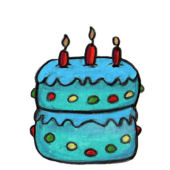
Purpose
To demonstrate how caves and rivers are formed through the process of erosion
Additional information
Rivers are a natural watercourse where fresh water flows to or from another body of water. Whether you call them a stream, brook, creek, or rill, these bodies of water have all been formed by the same process; erosion. Rivers form when constant water flows over the land and erodes the soil so that it forms a channel.
Sponsored Links
Required materials
- Frosting (fresh made frosting works best, but using canned frosting will work as well)
- Spoon or spatula
- Warm water
- Pitcher or tall drinking glass
- Sugar cubes (no specific quantity, but enough to help form a mountain)
- Baking pan or deep tray
- Ruler
Estimated Experiment Time
About 15 minutes to create your mountain and another 5 minutes to simulate erosion
Step-By-Step Procedure
- 1. Place your tray on a flat surface, such as a table.
- 2. Using your spoon or spatula, place a layer of frosting within a 5 inch by 5 inch square (use your ruler to measure the space)
- 3. Place several sugar cubes on top of the frosting base so they form a square that is about 1/2 inch smaller than the frosting base.
- 4. Use your spoon or spatula to place a layer of frosting on top of the sugar cubes that were just placed down. When done you'll have a layer of frosting that is 1/2 inch smaller than the previous layer,
- 6. Repeat steps #3 and #4, each time making sure the next layer is 1/2 inch smaller than the previous layer. Repeat until you've formed a mountain.
- 7. Fill your pitcher (or glass) with warm tap water.
- 8. Slowly pour the water from the pitcher (or glass) over the frosting mountain, moving allowing enough time for the water to penetrate the surface.
- 9. Repeat step #8 as many times as desired and at any point in the mountain. Continue until rivers start to form.
- 10. When you're done, use your spoon or spatula to cut the mountain in half.
- 11. Closely examine the separated mountain. What can you observe?
Note
Using warm water will help speed up the erosion process with your super sweet mountain. Do not use boiling water or water that is too hot, otherwise you may end up with a gooey mess!
Observation
When you cut your sweet and tasty mountain in half, what do you observe on the inside? Try cutting the mountain a few more times and take a closer look. What would happen if you used cold water? Do you think the type or brand of frosting would have made any difference? What happens if you run warm water over one spot on the mountain for an extended period of time?
Result
When you pour your water slowly over and through the mountain, it starts to erode the frosting as gravity pulls the water downward. The constantly flowing water source is simulating the effects of water on land, which erodes and cuts a channel into the ground. The longer you run your water over a single location, the greater the level of erosion and the deeper the river and channel of water you create.
Sponsored Links
Take a moment to visit our table of Periodic Elements page where you can get an in-depth view of all the elements,
complete with the industry first side-by-side element comparisons!